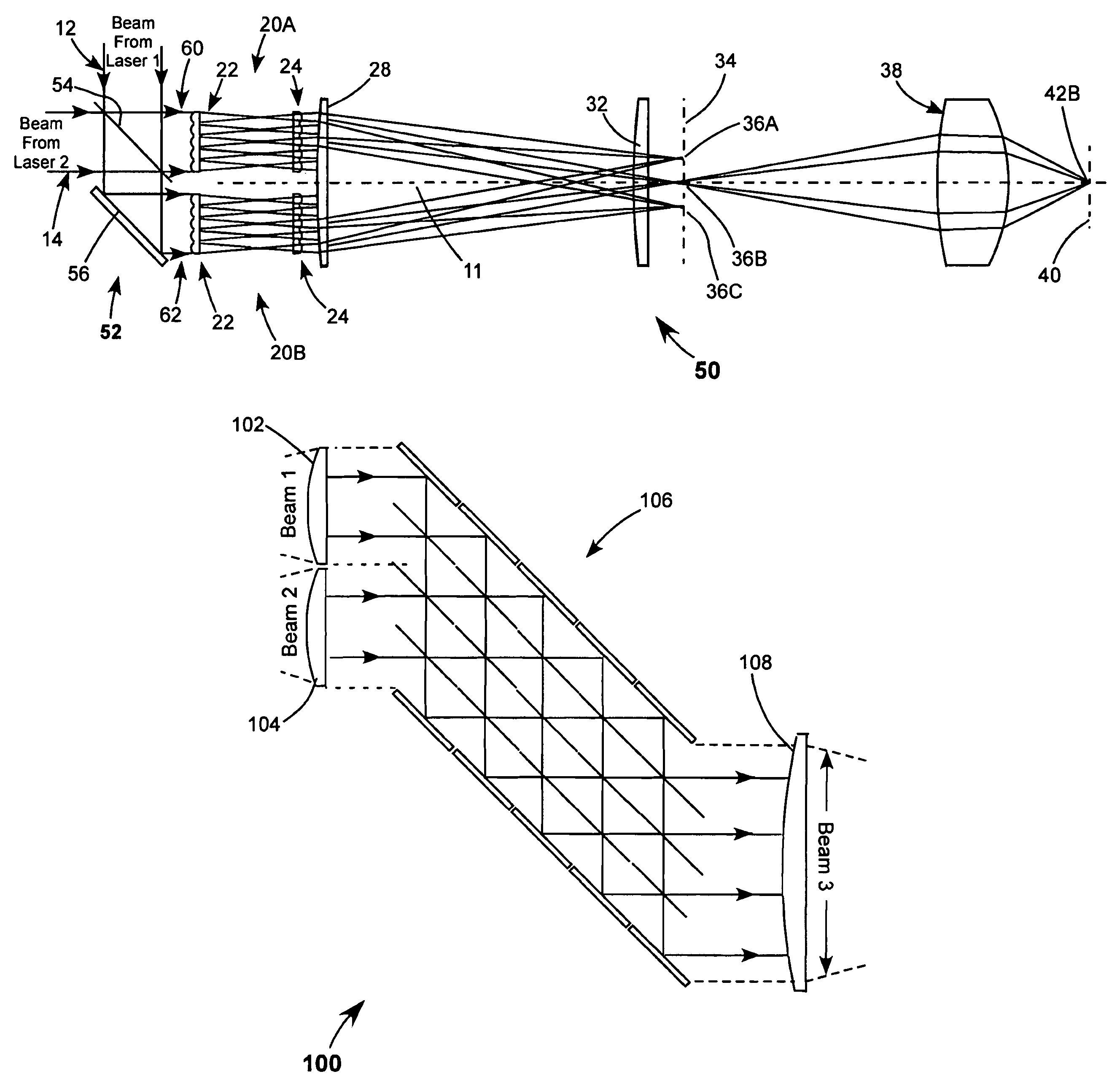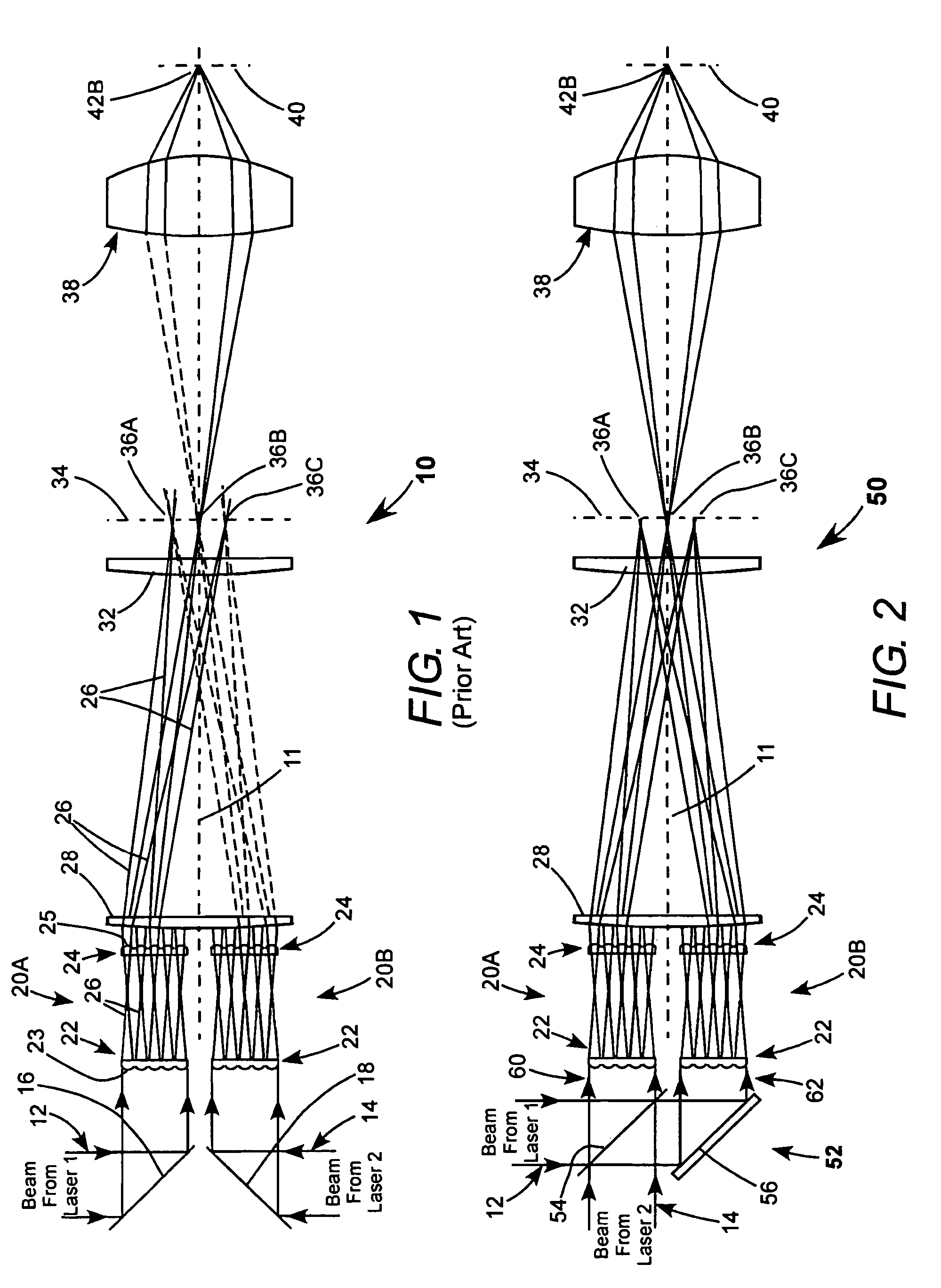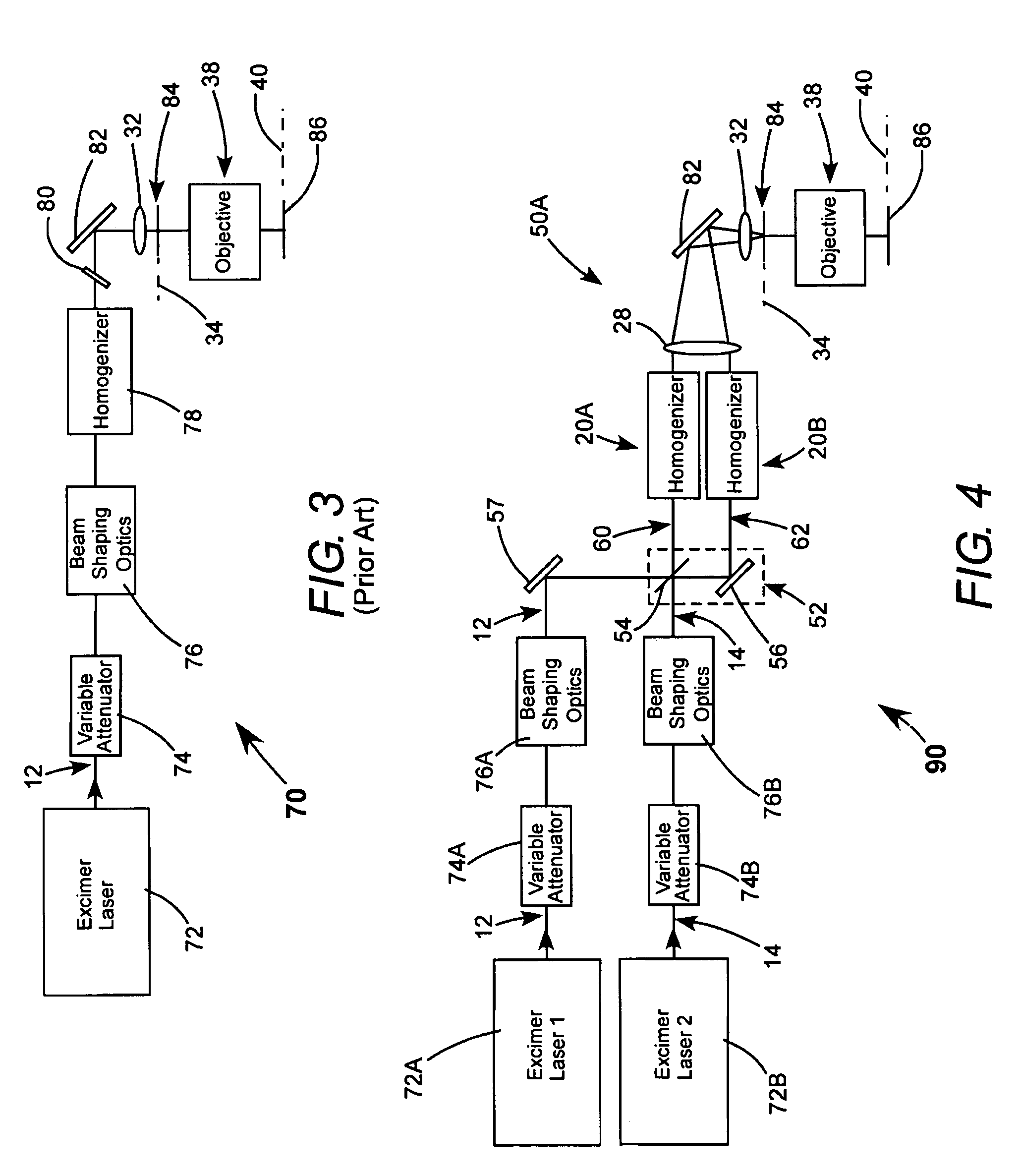Method and apparatus for coupling laser beams
a laser beam and laser beam technology, applied in lasers, laser details, instruments, etc., can solve the problems of inability to use temporal interleaving, limited to combining only two beams, and not practicable for combining unpolarized beams
- Summary
- Abstract
- Description
- Claims
- Application Information
AI Technical Summary
Problems solved by technology
Method used
Image
Examples
Embodiment Construction
[0033]Referring now to the drawings, wherein like features are designated by like reference numerals, FIG. 2 schematically illustrates a photomask imaging arrangement 50 including one embodiment of a beam-coupling method in accordance with the present invention. The method is described with reference to the prior-art beam-coupling method depicted in apparatus of FIG. 1 for convenience of description and to highlight advantages of the inventive method.
[0034]In apparatus 50, the arrangement of homogenizers 20A and 20B, collecting lens 28, and field lens 32 for causing two beams to be homogenized, and obliquely coupled in plane 34, is similar to that of apparatus 10 of FIG. 1. In apparatus 50, however, beams 12 and 14 from the two lasers are incident on an inventive optical arrangement that may be described as a beam-mixer or pre-coupler 52, including a beamsplitter 54 and a mirror 56 in this embodiment thereof. This beam-mixer provides, from beams 12 and 14 that have individual charac...
PUM
 Login to View More
Login to View More Abstract
Description
Claims
Application Information
 Login to View More
Login to View More - R&D
- Intellectual Property
- Life Sciences
- Materials
- Tech Scout
- Unparalleled Data Quality
- Higher Quality Content
- 60% Fewer Hallucinations
Browse by: Latest US Patents, China's latest patents, Technical Efficacy Thesaurus, Application Domain, Technology Topic, Popular Technical Reports.
© 2025 PatSnap. All rights reserved.Legal|Privacy policy|Modern Slavery Act Transparency Statement|Sitemap|About US| Contact US: help@patsnap.com



